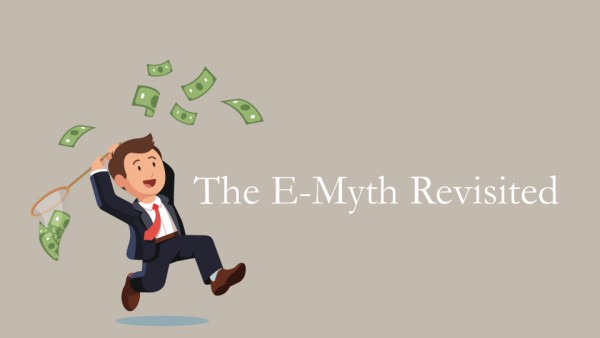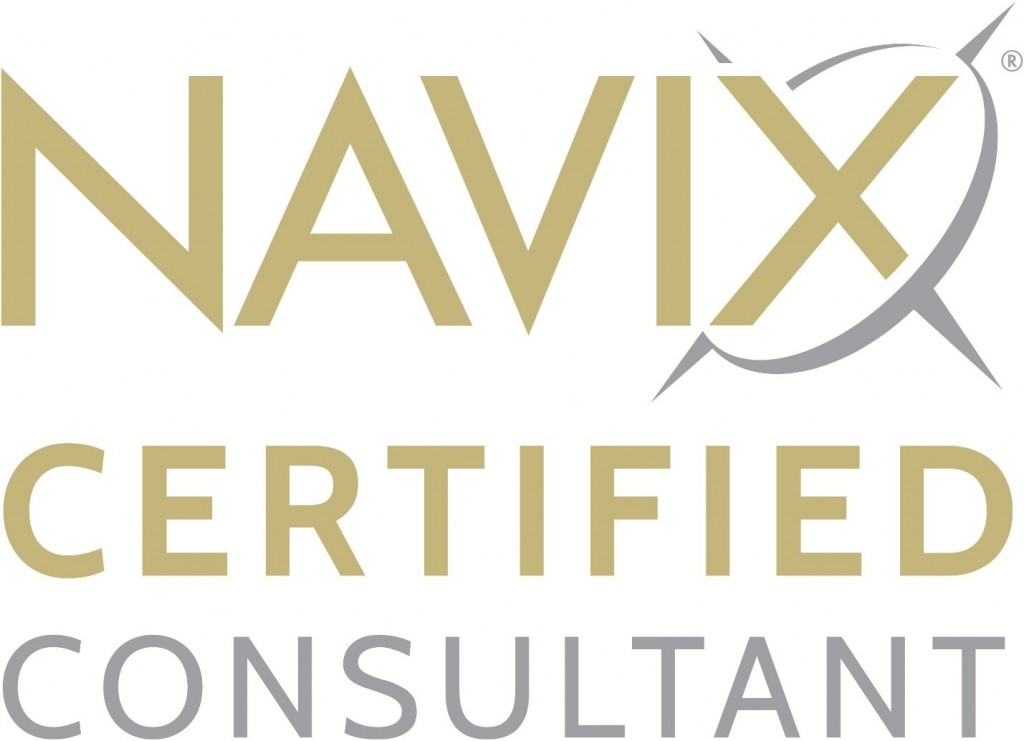
Archive for September, 2019
Book Review: E-Myth Revisited By: Michael Gerber
E-Myth Revisited
By: Michael Gerber

Readitfor.me Book Summary Review
When you become an entrepreneur, there are many predictable frustrations you’ll run into:
- Not having enough profit
- Not enough personal income
- Not enough customers
- Can’t find good people
- Don’t have enough time
- The business depends too much on you
And the list goes on. Finding your way out of those predictable problems is difficult, if not impossible, without a system that predictably produces the opposite of those issues.
That’s where The E-Myth and the Entrepreneurial Model it promotes comes in. According to Michael Gerber, the solution involves thinking about your business like a franchise – which is a proprietary way of doing business that successfully differentiates every extraordinary business from their competitors.
This is the classic “work on your business rather than in it” advice you’ll hear repeated by business gurus. The difference is that Gerber has created step-by-step instructions on how you should get there.
Through this book and summary, you’ll find the answer to the following questions:
1.How can I get my business to work without me?
2.How can I get my people to work but without my constant interference?
3.How can I systematize my business in such a way that it could be replicated 5000 times, so the 5000th unit would run as smoothly as the first?
4.How can I own my business and still be free of it?
5.How can I spend my time doing the work I love to do rather than the work I have to do?
Understanding the Rules
Here are the rules you’ll need to follow in order to get your business running like a franchise that produces predictable results:
1.The model will provide consistent value to your customers, employees, suppliers, and lenders, beyond what they expect.
2.The model will be operated by people with the lowest possible level of skill.
3.The model will stand out as a place of impeccable order.
4.All work in the model will be documented in Operations Manuals.
5.The model will provide a uniformly predictable service to the customer.
6.The model will utilize a uniform color, dress, and facilities code.
There are 7 distinct steps to get there, which we’ll cover in turn.
1.Your Primary Aim
Every entrepreneur starts a business for themselves. But we often get so tied up in the business that we forget that the ultimate aim of the business is to serve ourselves.
Here are the questions you need to answer with 100% clarity if you want your business to serve you, and not the other way around.
- What do I wish my life to look like?
- How do I wish my life to be on a day-to-day basis?
- What would I like to be able to say I truly know in my life, about my life?
- How would I like to be with other people in my life – my family, friends, business associates, customers, employees, and community?
- How would I like people to think about me?
- What would I like to be doing two years from now? Ten years? Twenty years? When my life comes to a close?
- What specifically would I like to learn during my life – spiritually, physically, financially, technically, intellectually? About relationships?
- How much money will I need to do the things I wish to do? By when will I need it?
2.Your Strategic Objective
Your Strategic Objective is a clear statement of what your business ultimately has to do in order to achieve your Primary Aim.
It’s a list of standards you can use to measure your progress towards hyour ultimate goal.
There are many standards you could include, but Gerber suggests that the first two on the list should be as follows.
First, you need to be clear on how much money your company will make when it is ultimately “done.” Will it be a $1 million a year company? A $500 million a year company? Something else? How much after-tax profit will it make? That’s the money you are going to use to build the life that you want through your Primary Aim.
Second, you need to build a business that can fulfill the financial standards you’ve set with the first standards. It tells you what kind of business you are creating and defines who your customer will be.
From there, there are no specific number of standards that need to be created. But it will help if you answer some of the following questions:
- When is the ultimate version of your company (Gerber calls this the prototype) going to be finished?
- Where are you going to be in business? Locally? Regionally? Internationally?
- What type of business are you going to be? Retail? Wholesale? Something else?
The standards that you create for your business will ultimately become the business you strive to create. Many entrepreneurs skip this step when they start, and never climb their way out of day-to-day operations of their business.
3.Your Organizational Strategy
Gerber reminds us that most companies organize themselves around personalities rather than around functions. And the result, he suggests, is almost always chaos.
The next logical step in building your business prototype is to determine the exact organizational structure you’ll need in order to execute on your strategic objective.
Here’s how you’ll do it.
- Build an organizational chart for what your business will ultimately look like. For instance, you might need a CEO (which may or may not be you), a COO, a VP of Sales, account managers, and so on.
- Put your name in all of the positions that you currently fill. When you are starting out, this will likely be all of them.
- Create very detailed descriptions of each one of the positions, which Gerber calls Position Contracts. This is a summary of the results that need to be achieved by each position in the company, the work the person is responsible for, a list of standards that the results are to be evaluated against, and a line for the signature of the person who agrees to fulfil those responsibilities.
- Sign your name to each of the contracts you currently fill.
The insight here is that you should create the system inside your business based on the standards you want to set, rather than letting other people do it for you.
In order to free yourself up to work on the strategic parts of the business, you need to rest easy knowing that the tactical parts of the business are being taken care of.
For instance, you don’t place an ad for a salesperson until you’ve created the Sales Operations Manual for the company.
Once you’ve created the position contracts for each of the roles in the company, you’ll know exactly which standards you need to be hiring against.
4.Your Management Strategy
Now that you have your organizational strategy created, you can move on to your management strategy.
Gerber suggests that our management strategy is the system we create for the business. It shouldn’t and can’t rely on expensive and talented people. The more automatic and specific your system is, the more effective it will be.
At its core, it is a series of checklists for everything that needs to be done inside the business.
For example, a hotel would have a series of checklists for the people who clean the rooms. And another series of checklists for the people responsible for checking guests in. And so on.
Finally, you should have a mechanism built into your system for following up on making sure that the work in the checklists is done properly.
For instance, you could have your people sign a checklist at the end of each job letting the company know that the work had been completed based on the steps required. And then make it a fireable offence for signing off on work that hadn’t been completed.
The benefits of a system like this are clear. You’ll be able to hire and train new people so that they’ll quickly be performing the tasks and producing identical results to people who have been doing them for a long time.
5.Your People Strategy
At the heart of your people strategy is creating an environment where “doing it” is more important to them than not doing it.
One of the key parts to making this happen is to ensure that the people you hire understand the reason behind the work they are being asked to do.
As Gerber points out, people do not simply want to work for exciting people. They want to work for people who have created a clearly defined structure for acting in the world. A structure through which they can test themselves and be tested.
In short, a game. The key, of course, is to make sure you are creating a game worth playing.
Gerber describes the “game” a hotel owner had created where his hotel become a world in which the sensory experiences of his customer were greeted by a profound dedication to cleanliness, beauty and order.
This went beyond the commercial justification and extended into the worldview the owner of the hotel had. It was then communicated to his employees in both words and actions.
He communicated his idea through the systems they documented for running the business, and through his warm, caring manner.
Importantly, he set the tone for this game at the beginning of his relationship with his employees – before they were hired.
There were 5 distinct components to the hiring process:
A scripted presentation communicating the Boss’ idea in a group meeting to all the applicants at the same time. It described his idea, but also the history of the business and their success in implementing the idea, and what would be required for the successful candidate for the position.
Then he met with each applicant individually to discuss their reactions to his idea, and ask them why they thought they would be a good fit to implement the idea.
He notified the successful candidate by phone with a scripted presentation.
He notified the unsuccessful applicants, thanking them for their interest.
On the first day of training, the boss did the following:
- Reviewed the boss’ idea;
- Summarized the system through which the entire business brings that idea to reality;
- Took the new employee on a tour of the facility, highlighting the people and systems that bring the idea to life;
- Answered the employee’s questions clearly and fully;
- Reviewed the Operations Manual with the employee, including the Strategic Objective, the Organization Strategy, and the Position Contract for the employee’s position.
- Completed the employment papers.
This is how you bring the core values of your business to life.
6.Your Marketing Strategy
Your marketing strategy lives and dies with what your customer wants, and how you deliver it to them.
And understanding what your customer wants depends on you understanding the two pillars of a successful marketing strategy – the demographics and psychographics of your customers.
When you first start your business, you’ll already have defined the demographics of your customers. Your next job is to figure out as much of the psychographics for that segment of the market as possible.
What other brands do they buy? How are those companies – who are already successfully selling to those people – sell to them? What colors do they use? What messages are they sending? What values do they seem to be promoting?
Then, you’ll take all of that information and figure out what your business must be in the mind of those customers in order for them to choose you over everybody else.
Finally, you’ll make a promise your customer wants to hear, and then align your entire organization around delivering on that promise better than anyone else on the block.
Of course, as your company continues to grow, you’ll continue to learn about the demographics and psychographics of your customers, and continue to iterate on your marketing strategy over time.
7.Systems Strategy
The last piece of the puzzle in building your business is your systems strategy. There are 3 kinds of systems.
Hard systems are inanimate, unliving things. Soft systems are either living things, or ideas. The core of the book and summary so far have been a combination of those two systems.
The third system is the information system, which provides us with information about the interaction between the other two.
As an example, if you have a sales system that tracks the sales steps from beginning to end (you should), you would be tracking some or all of the following items:
- How many calls were made?
- How many prospects were reached?
- How many appointments were scheduled?
- How many appointments were confirmed?
- How many appointments were held?
- How many Needs Analysis Presentations were scheduled?
- How many Needs Analyses were confirmed?
- How many Needs Analyses completed?
- How many Solutions Presentations were scheduled?
- How many Solutions Presentations were confirmed?
- How many Solutions Presentations were completed?
- How many solutions were sold?
- What was the average dollar value?
In short, the information system should tell you everything you need to know about how your people are performing, so that you can meet your strategic objectives, so that you can meet your primary aim.
Conclusion
Successful businesses are not built on myths. The right organization, people, management, marketing and systems build a business capable of producing the desired, predicable results.
Tim Kinane
Call 772-210-4499 to set up a time to talk about tools and strategies that will lead to better results.
Please share this with a friend/colleague
10 Questions to Answer Before Replying to an Inquiry to Buy Your Company
By: Patrick Ungashick

If you are like most business owners, you probably receive a steady flow of emails and phone calls seemingly offering to buy your company. As you know, many of these inquiries are junk, coming from somebody on a fishing expedition—and you don’t want to end up on that hook. But, how do you know if an inquiry is legitimate and you should consider replying? You could miss a golden opportunity. Then, if you should reply, what’s the right way to respond without appearing too eager, or without revealing sensitive information to a competitor? The wrong move here could ruin a potential deal, or put your company at risk, or waste much time.
To know what to do when a potential buyer contacts you, you must first verify if the inquiry is legitimate. Then, you need to make sure that you are ready for the stream of questions that will immediately come your way.
Step One – Determine if the inquiry is legitimate.
If you already know the party contacting you, and you know they are a legitimate buyer (or represent one), then you can skip this step. Otherwise, you have to determine who the inquiry is from to evaluate its legitimacy. If the inquirer is vague or guarded about their identity, then it is a waste of your time. For example, be wary of obscure phrases such as “I am working with several buyers…” or “I represent a buyer looking to make acquisitions in your industry…” As long as the inquirer will not disclose who they are (or whom they represent), you probably should not respond.
However, if the person or company contacting you openly discloses their identity, usually you can quickly determine the inquiry’s quality with a little online research in three ways:
- Visit their website(s) to learn about who they are
- Google the person and/or organization to see if any recent events have occurred regarding this person or company, most helpfully if they have been involved with any recent transactions
- Look up the person(s) in LinkedIn to read their credentials and background
Generally, you want to make sure that this person and/or company is established and credible. For example, if their website is “Under Construction,” then probably you should delete the inquiry and go back to work. Or, if they have a website but it hypes only transactions they have done in an industry totally different from yours, then delete and go back to work. Or, if the person who contacted you has a LinkedIn page featuring the bright shining face of somebody fresh off a college campus, then probably delete and go back to work.
If you do not uncover anything that concerns you, proceed to the following ten essential questions to know if you are prepared to talk to a potential buyer.
(Disclaimer: At this point, you should enlist the help of professional advisors who have experience in these situations—people like us. Your company is too valuable and important not to have the best team working for you. However, at NAVIX, we genuinely want to help all business owners, so here are the remaining steps if you intend to do this yourself.)
Step Two – Evaluate if you and your company are ready for this conversation.
There are many risks associated with responding to an inquiry if you and your company are not ready. One is lost time and focus. Potential buyers are notorious for chewing up business owners’ time with ever-expanding information requests. Today, they only want your financials. Next week, they’ll be asking for your customer lists and pricing model. Many buyers look at dozens of companies for each one they seek to buy. So, there is a high probability that you will expend a lot of effort and achieve nothing. A second risk is revealing sensitive information to a potential competitor. Even providing your company’s basic financial information tells a competing organization a lot about your operations, strengths, and weaknesses.
Unfortunately, many business owners wing it when responding to unsolicited inquiries. This practice rarely leads to a successful outcome. To be ready to respond to an unsolicited inquiry, at a minimum, you must know the answers to the following 10 questions. There are many more steps involved to get you and your company ready for sale, but these ten are “go or no-go” issues. Meaning, you must know the answer to these ten questions to consider replying to one of those emails or returning one of those phone calls. If you don’t know the answer to even one of these questions, you will likely reveal to a potential buyer that you are inexperienced (and thus vulnerable) or disorganized (and therefore either not worth pursuing, or not worth top dollar). The ten questions are:
- Do you know your company’s adjusted EBITDA for the prior three years and year-to-date? Most transactions are valued at a multiple of adjusted EBITDA. You could be significantly understating the value of your company if you are talking to potential buyers without having properly adjusted (or “normalized”) your EBITDA.
- Do you have a feel for what multiples companies in your industry are currently selling for, beyond rumors and boastful country club talk? If you talk to a potential buyer but don’t know the current multiples in your industry, you don’t know if your buyer is offering you a strong price or bottom fishing.
- Regarding multiples, do you know specifically what drives value in your industry? Have you addressed the things that position some companies to trade at premium EBITDA multiples relative to their peers, while others sell at discounts? The answers can vary across different industries and company sizes.
- Do you know the post-tax amount you would need to sell to achieve financial freedom? Bad guesstimates on that front can lead to passing on reasonable offers, or worse, needing to find post-exit employment. We call this your Exit Magic Number™.
- Are your financial statements bullet-proof? Are your income statements, balance sheets, budgets, and projections readable, credible, formatted to industry specifications, and optimized to maximize value? Many are not. It’s not sufficient that you understand your financials—will a buyer understand and accept them?
- Have you identified all the critical sales, operations, and financial metrics that could potentially scare off a buyer? Are they all trending positively?
- Are all your legal documents current and aligned with a potential sale? That is especially relevant if you have business partners. Just because you own a majority of the stock does not necessarily mean you have authority to sell the entire company. You don’t want to open up the discussion with a potential buyer only to learn your partnership and/or operation agreements don’t address a company sale, which many do not.
- Do you know the information that a buyer will likely request? Buyers initially start with a few documents they ask to see upfront, and then quickly expand to asking for a few dozen and more. Are they organized and readily available? Does your team have the bandwidth to respond to these requests promptly?
- Speaking of your team, if you start talking with a potential buyer, are you prepared to tell the key people on your team? The process with a potential buyer will usually not get very far without help from key managers. Also, buyers will see an increased risk if you are avoiding to include key managers in the process.
- Are you comfortable flying blind? In other words, are you willing to give up the leverage and knowledge that is lost when you deal with a single buyer? Most business owners understand the loss of leverage, and you may decide that you retain the ultimate advantage by being able to walk away from a deal. However, the loss of knowledge can be more problematic. Specifically, how will you know if you should walk away from this buyer? If, after a few discussions, the buyer offers $25 million, how do you know if that’s the best you could do, or if it is even a fair offer? By going down the path with a single buyer, you don’t know if another buyer would have offered you $20 million, or $30 million, or $50 million.
The lack of knowledge is not just about price. Maybe halfway through due-diligence, you are not so excited about this buyer’s plans for your company or your people. If you are talking with only one buyer, you don’t have another buyer to compare their plans for the company. Leverage is essential, but knowledge is power. You will give up that power when they follow through on unsolicited offers.
If you can answer affirmatively to these ten questions—actively, clearly, and unequivocally—then it may make sense to respond to an unsolicited inquiry which you believe to be legitimate. You will still have dozens of more things to do from here, but you should at least be off to a solid start. However, if you cannot answer affirmatively any one of the ten questions presented above, it may be too risky, and it may cost you too much lost time to reply to any of these emails or phone calls. Instead, use your time to get you and your company ready, so that you can properly reply to a future inquiry. To do this, contact us to learn how we can help you as we have helped many hundreds of other business owners achieve successful and happy exits.
If you have a quick question coming out of this article or, if you want to discuss your situation in more detail, we can set up a confidential and complimentary phone consultation at your convenience contact Tim 772-221-4499.

Seven Situations to Consider Bringing in an Outside Investor
By: Patrick Ungashick

You believe your business would grow faster, if you had more cash.
Or, perhaps you’d buy out that partner who’s not in sync with the company’s direction, if you had more cash.
Or, perhaps you’d take some cash home to diversify your wealth and sleep better at night—if only you had more cash.
Whatever your specific need, perhaps you’d do it—if you had more cash. That’s just the thing though. How do you get more cash to accomplish your business needs, without giving up too much in return, or taking on more risk than you should? Most business owners, at some point, will struggle with this question.
If a need for additional capital is identified, often owners automatically turn to debt to meet the need. Debt avoids dilution. In many cases securing outside debt is easier—one phone call to your commercial banker, and shortly thereafter you have a term sheet in your hand. Finally, owners know that with debt they are not sharing leadership and decision-making control with outsiders.
Yet, there are situations where investigating bringing in outside equity, either as an alternative to debt or as part of combined debt and equity approach, may make sense. We see seven common situations where raising outside equity may be a good fit to meet the needs of the business and its owners:
1.You can bring in outside equity without giving up control. It’s more myth than fact that if you bring in outside investors, you must give up control over your business. While some investors want control, many will consider minority investment situations, and some even prefer it. Most investors will require certain protections, often called “super-majority rights,” that require unanimous consent for the most critical decisions, such as selling the entire company, raising additional debt, or bringing in other investors. But the day-to-day operations and decisions can remain yours entirely in many situations.
2.You have a proven business model with no serious limitations to scalability. If this is accurate, then the more fuel into your company engine, the faster and farther it may go.
3.You have one or more co-owners who are not on the same page with regards to your company’s plans and direction, and buying them out will remove this obstacle and source of friction. With outside capital, you may be able to put cash on the table and buy them out quickly and at an attractive price.
4.You are racing against the competition, and speed to market and/or rapid gain of market share will define success or failure. If this is the case, then you may need to secure sufficient cash to win the race.
5.Your equity partners bring more than just cash to the table. If your investors can bring you market experience, leadership skills, transaction knowledge, industry contacts, or growth opportunities, then you may be getting a bargain. For example, many investors will require a certain number of seats on the Board of Directors. You cannot underestimate the value of having a formal board to help with financing, recruiting, financial and market analysis, project feasibility analysis, legal issues, and exit timing.
6.You desire to “take some chips off the table,” and outside money will allow you to diversify your personal net worth and gain liquidity outside the company. Many owners spend years and sometimes decades highly illiquid. Eventually, this causes most owners personal stress and anxiety—for a good reason. Bringing in outside investors may create personal liquidity, which not only reduces risk but for some owners infuses them with new excitement about taking the company to the next level, given their improved financial security. Bringing in outside investors often eliminates the need for personal guarantees, further reducing the owners’ risk.
7.You have a strong leadership or management team, some of whom want an equity stake in the company. Usually, these leaders and managers lack personal capital to buy into the business. Outside investors can help the management team to buy in, again without requiring taking control. Often we see this done with the current owner maintaining some ownership in the business, allowing him or her to gain liquidity while remaining involved in the company going forward.
There can be additional benefits to bringing in outside equity. One is the potential of increased credibility at your exit. If, after raising outside equity, you later decide to sell the entire company, many buyers have a perception that the business is more “buttoned-up” because outside equity investors have been involved.
While there are other reasons to consider bringing in outside equity, these seven are perhaps the most common situations where outside equity could be a game-changer for you and your company. If you face any of these situations, take an objective, comprehensive review of your company’s capital needs, and then determine the most effective capital strategy—including outside equity when advantageous.
To learn more, watch this webinar on how to “Cash Out Without Walking Out” or contact us with your questions.
If you have a quick question coming out of this article or, if you want to discuss your situation in more detail, we can set up a confidential and complimentary phone consultation at your convenience contact Tim 772-221-4499.

Your Last Five Years: How the Final 60 Months will Make or Break Your Exit Success

Have you been telling yourself you want to exit from your business sometime within the next “five or so years” for a long time now?
What you do these final five years (60 months) will determine your exit success or failure.
This webinar explains how, and covers:
- Immediate steps to take when you reach five years before exit
- Biggest mistakes owners make, and how to avoid them
- Checklist of things to not overlook

If you want to discuss your situation in more detail, we can set up a confidential and complimentary phone consultation at your convenience contact Tim 772-221-4499.

The Recession is Coming! The Recession is Coming!
By: Patrick Ungashick

The next recession is coming!
One does not need a Ph.D. in economics to know that an economic recession is coming. The hard part is predicting when it will hit, and how badly it will be. Given that we are currently in the ninth year since the previous recession ended in late 2009 to early 2010, it is reasonable to conclude that we likely are closer to the next recession than we are to the last.
We will let professional economists predict the next recession’s date and depth, and instead, examine what a recession means for business owners thinking about exit. The critical implication is that a recession can delay or block you from achieving your exit goals. For example, depending on your industry, and the strengths or vulnerabilities within your company, a recession potentially can:
- Force you to delay your exit timetable, typically by many years.
- Erode the value you get at exit, through the double-whammy of reduced company profits if your revenue and earnings have fallen, AND the prospect of selling at a lower multiple in the marketplace as demand for companies have fallen, and banks have tightened lending.
- Make it more difficult to reach personal financial freedom, due to the combination of reduced profits to take home prior to exit and lower sale value at exit.
- Reduce your ability to find a buyer or successor who is a good fit with your company culture and values.
For all of these reasons, you must have a clear set of criteria for determining when you should exit from your company, and what you must do to get your company and yourself ready. To start, consider watching this recent educational webinar on how to know when it’s time to exit. Then, contact us for a free phone consultation to discuss your exit situation and how to plan for the upcoming recession.

The Ultimate Question 2.0 Book Review
The Ultimate Question 2.0
By Fred Reichheld
There is one question that can help you define a great customer experience, leading to more customer loyalty and profits. Learn what it is and start using it today.

Readitfor.me Book Review
We all want our customers to be happy. And we all know that happy customers is the only way to create long-term success in business.
The challenge is to understand how customers are feeling and how to create a customer experience that delivers more happiness and less frustration.
Traditional surveys aren’t up to the task. There are too many questions, and instead of action, they inspire paralysis by analysis.
Financial reports don’t help us either because they don’t distinguish between, as Fred Reichheld calls them, “good profits” and “bad profits.”
This book is all about asking a deceivingly simple question, calculating a score, and then taking actions to increase your score. It’s simple, and that’s why it works.
The Questions
The system that Reichheld suggests we use in order to increase customer loyalty is called the Net Promoter System (NPS for short).
The system has us ask 2 simple questions and then use the answers to create our path forward.
First, you ask the Ultimate Question, which is:
On a scale from 0 to 10, how likely is it that you would recommend us (or this product/services/brand) to a friend or a colleague?
Next, you ask a follow up question:
What is the primary reason for your score?
This open-ended follow up question allows you to hear the reasons for the score in the customers’ own words. This is important, because it avoids the leading questions that are often built into the customer loyalty questionnaires.
Promoters, Passives and Detractors
After asking the two questions, you sort people into different buckets based on their answers.
Promoters
These are people who answer the Ultimate Question with a 9 or a 10. This is a signal that their lives have been enriched by doing business with your company. They typically make repeat purchases and give your company a larger amount of their spending. They are also big word of mouth advocates and tell their friends, family and colleagues about their experience.
The goal is to have as many of our ycustomers be Promoters as possible.
Passives
These are people who answer the Ultimate Question with a 7 or 8. They are satisfied customers, but not loyal customers. The behaviours you see from these customers are different. They don’t make many referrals, and the ones they do make are not enthusiastic. If a competitor runs a promotion, they are likely to defect. These are customers that you cannot bank on sticking around for the long-run.
Detractors
These are people who answer the Ultimate Question with a 6 or below. They are the reverse of the Promoters – their lives have been diminished by doing business with your company. They are completely dissatisfied with their experience, and are likely to tell their networks about it.
Calculating Your Net Promoter Score
Now that you have figured out which buckets your customers go in, it’s time to calculate your Net Promoter Score.
This calculation is very simple as well:
NPS = % of Promoters – % of Detractors
Now that we’ve covered exactly what the Net Promoter Score is and how you calculate it, let’s move into why you should use this at your company, and exactly how to implement it.
Two reasons to use NPS
The Net Promoter System is based on two pillars – economic and inspirational.
The economic pillar of NPS is about understanding why it makes business sense to invest in customer loyalty, and what the ROI is on creating more Promoters and less Detractors. If you’re not the person in charge of the finances at your company, they you need to build the case for the person that is (usually the CFO). We’ll cover the economic reasons to use NPS in the next section.
The inspirational pillar of NPS is about helping enrich the lives of the people at our company by putting the Golden Rule at the centre of your decision making process. You’ve heard from many other books and experts how important it is to help your team find purpose in their work – treating others as you’d like to be treated as a customer is a concrete and tangible way to do it.
Good Profits/Bad Profits
At the core of the Net Promoter System is the idea that good profits are better than bad profits in the long-run, and that you use NPS to get more good, less bad.
Bad Profits
Bad profits are the ones earned at the expense of the customer. They are about extracting value from customers, not creating value for them.
They show up in many different ways. For instance, discounts, sales promotions and expensive advertising lead to a profit squeeze, which usually leads to more discounts, sales promotions and expensive advertising. It’s focussing on the wrong end of the problem.
The consequences of relying on bad profits are enormous. They blacken your reputation, and they alienate customers and employees alike. They make you vulnerable to competitors. The ultimately lead to poor results over the long run.
Good Profits
Good profits, you might have already guessed, come from loyal customers.
These customers ultimately lead to great business results over the long-run. A great example of this is Costco, which is the leader in customer-loyalty among warehouse retailers. They went from start-up to a Fortune 50 behemoth in less than 20 years. How much did they spend on advertising and marketing? Almost nothing. Their customers are so loyal that they have depended almost entirely on word-of-mouth for its growth.
Ok, but just exactly how much are they worth?
Now that we’ve covered the general, let’s get to the specific.
The first thing you need to do in order to calculate exactly what Promoters are worth to your business is to figure out the lifetime value of your average customer.
Then, using that as your baseline, calculate the same thing for your Promoters, Passives and Detractors. If you are like most businesses that go through this exercise, you’ll find that the lifetime value of Promoters are worth much more to your business.
There are many different business metrics at the heart of why this is the case:
- Retention rate. Promoters stick around at a much higher rate. This also means that your customer acquisition costs get spread out over a longer lifetime, leading to a more profitable customer.
- Pricing. Promoters are more often less price sensitive than Detractors, which means that you don’t have to rely on discounts and expensive marketing campaigns to keep them.
- Annual spend. Promoters spend more of their money with you than Detractors do.
- Cost efficiencies. You already know this intuitively – your best customers require the least amount of time and attention. So, they actually cost you less than Detractors.
- Word of mouth. Between 80 and 90 percent of positive referrals come from Promoters. So, each Promoter is not only worth the revenue you generate from them, but from the revenue you generate from the referrals they make as well. And to make this element even more powerful, the people that Promoters refer to your business are much more likely to become Promoters themselves than customers that find you through more traditional means.
Even if you can’t come up with an exact figure around how much a Promoter is worth to your business right now, you can estimate. For instance, a bank that worked with Bain & Co on a Net Promoter project calculated that they are worth $9,500 more to the bank than a Detractor.
On the other hand, Detractors are responsible for 80 to 90 percent of negative word of mouth, and actually have a negative lifetime value to your company. You can see why you’ll want to figure out how to not acquire these people as customers in the first place.
8 Principles of using NPS systematically
If you are going to use NPS in your business, there are principles that the authors have learned through hundreds of successful implementations that you’ll want to keep in mind.
Principle 1: Ask the Ultimate Question and very little else
The tendency of most people who use NPS for the first time is to want to add in a bunch of other questions. If you do want more detail after you’ve asked the Ultimate Question and one follow up (which should focus on having the person explain their score, or suggesting improvements that would make it more likely for people to recommend), the appropriate action to take is to call the person and interview them.
Principle 2: Choose a scale and stick to it
The 0 to 10 scale has many advantages. It makes intuitive sense, most of the world uses it as a measuring stick (like in hospitals asking about the severity of pain), and makes it easy to spot differences in behavior that a 5 point scale would miss.
Principle 3: Avoid confusion between internal scores (‘bottom-up’ or ‘touchpoint’) and external scores (top-down, benchmark or ‘relationship’ scores)
Larger companies will sometimes have external firms to do random checks on customers to produce a score that can be compared to customers of a competitor. These are helpful to benchmark performance, but they are not the same thing as the scores generated after specific touchpoints, like asking the question to a customer soon after they purchase. These touchpoint surveys are where you’ll find the “golden nuggets” you need to fine tune every part of your customer experience.
Principle 4: Aim for high response rates from the right customers
It would be great to get feedback from all customers, but you should begin with the customers you care most about – your core or target customers. The goal of NPS is to predict hard, quantifiable behaviors, and for that you need large sample sizes.
Reichheld suggests that if your survey response rates are lower than 65 percent, your process needs to improve. There’s a good reason for this. There’s a tendency for people to assume that the distribution of non-responders are like the distribution of responders. However, that’s not true. Non-responders tend to be Passives or Detractors, so a low response rate will almost certainly show you a better NPS score than you really have.
Principle 5: Report and discuss NPS data as frequently as financial data
If you only measure and discuss your NPS scores once a year or quarter, nobody will pay attention to it except when the results come out. Which, of course, is not often enough to drive the changes in your business that will lead to more Promoters and less Detractors.
Principle 6: Learn faster and improve accountability with more granular data
There are two things you can do to create more granular data.
First, you can ask the Ultimate Question at each customer touchpoint. For instance, after a customer service call, you could ask the customer whether or not you resolved their problem, and then the Ultimate Question.
Second, and this follows from the first, you should empower everybody in the organization that touches the customer to collect the information and insights needed to change internal behaviors.
Then, you hold the people responsible for those interactions for increasing the NPS associated with those interactions.
Principle 7: Audit to Ensure Accuracy and Freedom from Bias
The closer you get to granular insight and accountability, the more bias will creep into the process. Every time I buy a car I’m reminded by the sales rep that “anything less than a perfect score on the customer satisfaction report is considered a failure, so please give me a perfect score.”
There are multiple sources of bias which you’ll need to fight against, but one of the easiest ways to do that is to use a software system and email deployments to collect the information. If you do need to use phone calls to collect the information, using a third-party to do them will help eliminate most of the bias.
Principle 8: Validate that Scores Link to Behaviours
Finally, the entire purpose of the NPS process is to ensure that you are generating more of the customer loyalty-type behaviors that drive business results – referrals, buying more and taking time to give constructive feedback.
For instance, check in periodically with the people who are giving you 9s and 10s on the surveys to ensure that they are making referrals, buying more and giving you constructive feedback. If they are not, you need to revise the way you gather feedback until you are seeing the scores and expected behaviors lining up.
Closing the Loop with Customers
Finally, in order to make NPS a successful part of your daily workflow, you need to close the loop with customers.
Closing the loop on the front line level means following up with as many Detractors as possible to identify any insights you can gain into why their experience was a negative one. Once you’ve pooled the insights, make decisions on what needs to change and make sure all front-line staff are notified of those changes.
Closing the loop for mid-level managers means using feedback from your Promoters to create products and services that are designed to attract and retain more Promoters.
Creating a great customer experience starts with good communication. Asking the right questions can give you the good information needed to create a great customer experience leading to more customer loyalty and profits.
Tim Kinane
Call 772-210-4499 to set up a time to talk about tools and strategies that will lead to better results.
Please share this with a friend/colleague
 Tim is a Consultant to Business, Government and Not-for-Profits Organizations specializing in innovative and challenging ways for organizations to survive, to thrive and to build their teams.
Tim is a Consultant to Business, Government and Not-for-Profits Organizations specializing in innovative and challenging ways for organizations to survive, to thrive and to build their teams.